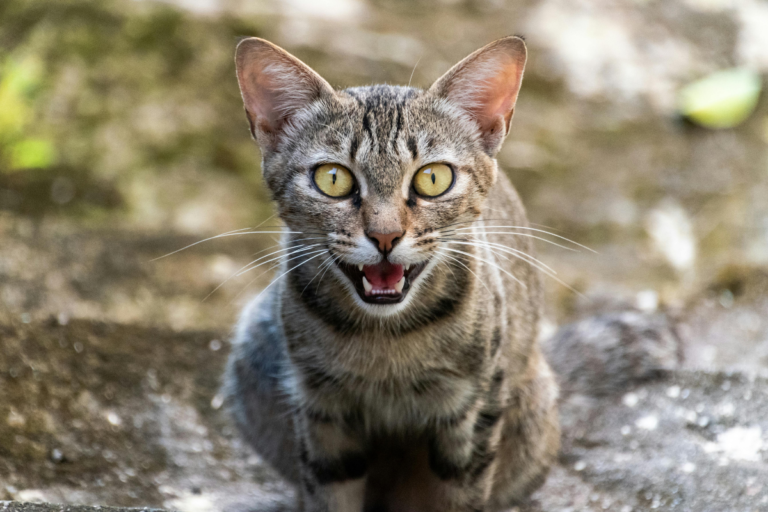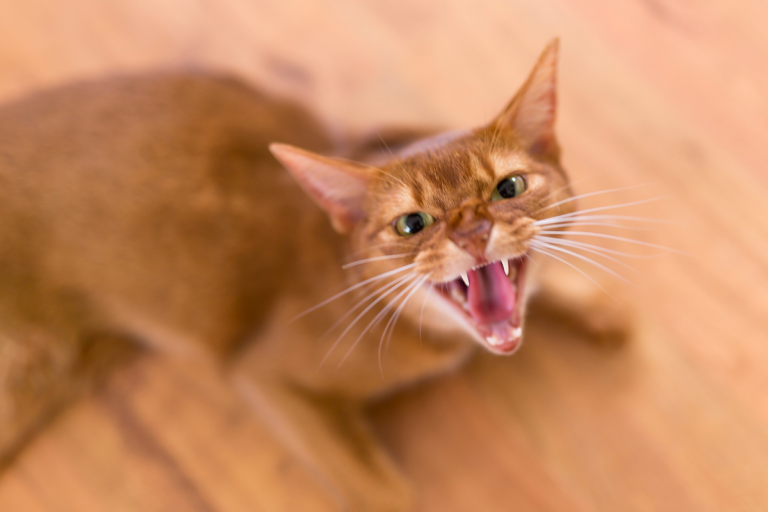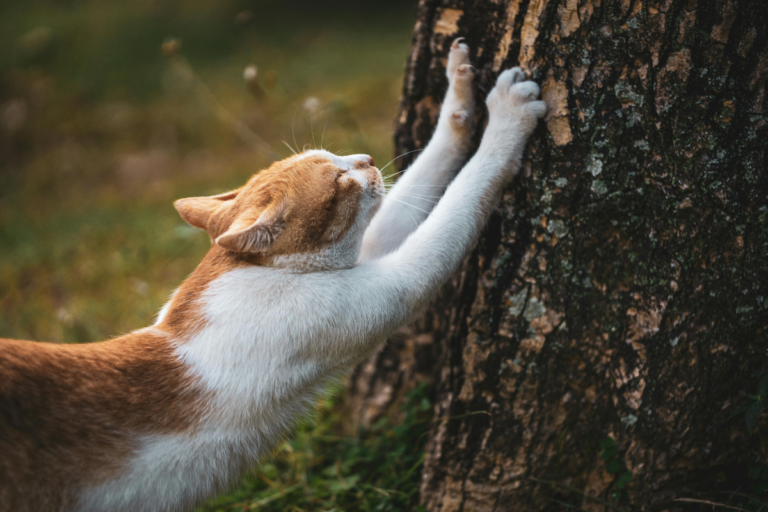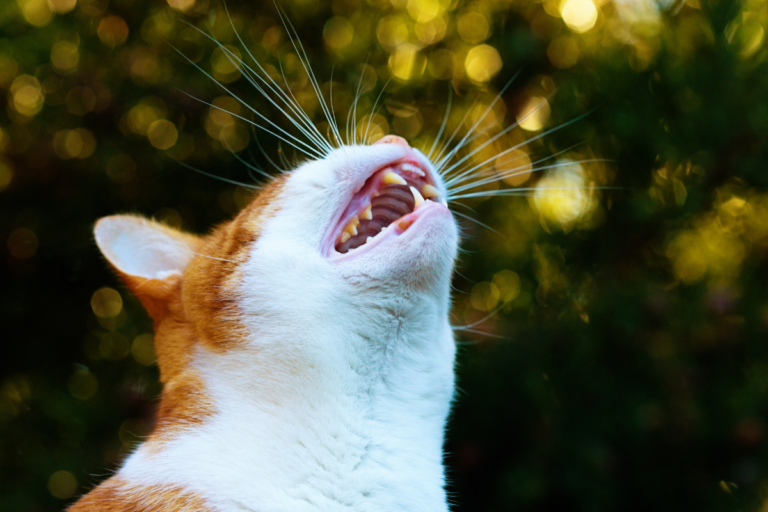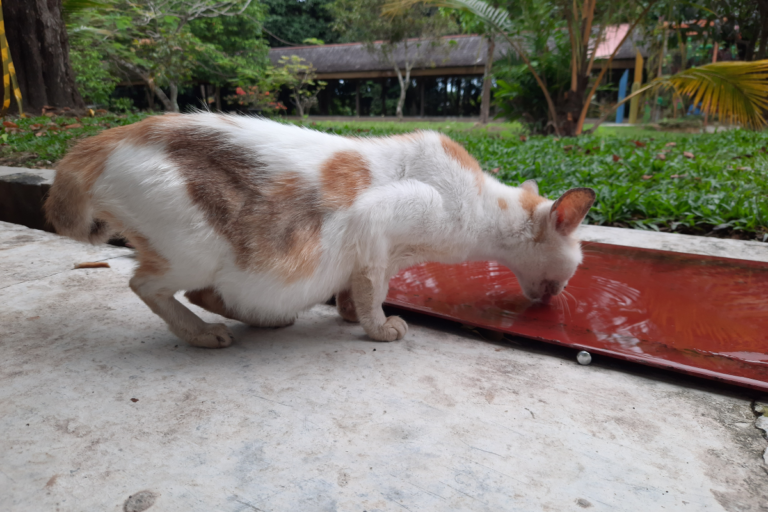Embracing the Pawsitivity: Orange Cat Behavior Explained
Understanding Feline Behavior
Basics of Cat Behavior
Oh, cats! If you’ve ever spent some time watching your beloved feline, you’ll notice a mix of puzzling and endearing antics. They’re like tiny, furry mystery books that you just can’t put down. It’s all about unlocking the code—most of it is deeply rooted in their instincts or their quirky way of saying “hello.”
For example, I often catch my cat giving me a friendly headbutt—yep, that’s not a random act of aggression but a way of marking me with its scent. It’s their way of saying “you’re my favorite human today!” But when I spot them chasing their own tail, it’s either playtime or they’re simply pulling a fast one for some giggles and a bit of attention.
Socializing them when they’re young is a big deal. It means they’ll be more chill around us humans and their four-legged pals. It’s pretty wild how things like scratching the furniture or meowing like there’s no tomorrow tie back to how well they played nice during their kitten years.
Factors Influencing Behavior
Why does my cat do that thing? It’s a mystery solved by diving into a few key influences:
- Genetics: Even cats get some personality traits from mom and dad. Think of it as family quirks passed along.
- Breed: Like dog breeds, cat breeds have their stereotypes. Maine Coons, for instance, are seen as the friendly giants of the cat world.
- Environment: The chill-factor of a cat’s home plays a big part in how relaxed or jumpy they might be. A peaceful space means a more trusting kitty.
- Health: If they’re feeling under the weather, their behavior could shift a gear. A regular health check keeps those surprises at bay.
- Nutrition: Bad food = grumpy cat. Feeding them right keeps them sparkly and in a good mood.
- Experience: What they’ve seen and done—whether heartwarming or hair-raising—dictates how they handle new situations.
Here’s a handy table for a quick peek:
| Factor | Impact |
|---|---|
| Genetics | Personal quirks run in the family. |
| Breed | Breeds act in certain ways; they can’t help it. |
| Environment | A haven fosters calmness; chaos not so much. |
| Health | Sickness throws their behavior for a loop. |
| Nutrition | Diet affects mood and behavior big-time. |
| Experience | Good vibes equal trust, bad ones can lead to retreat. |
If someone tried convincing you that orange tabbies act a certain way ’cause of their fur color, chuckle politely. Science hasn’t confirmed that one yet (Kinship). Instead, peek at these factors to really get what makes your cat tick.
When confronted with feline dramas like yowling or playtime turning into a chomp-fest, I consider what might be the culprit from the list above. For more tidbits about your cat’s curious actions, swing by our cats behavior and cat psychology corners.
Debunking Orange Cat Myths
Being a cat owner comes with its quirks, but let me tell ya, orange cats come with an extra dose of myth and mystery. Let’s take a playful romp through fact and fiction and figure out what’s really purring behind those orange fur balls.
Media Portrayal vs. Reality
Orange cats seem to have gotten their fair share of the spotlight! Whether it’s Garfield chowin’ down on lasagna or the valiant Puss in Boots whiskering his way into adventures, these cats get painted as real characters. But hey, don’t buy into the media hype too much; their supposed whacky traits aren’t a science-backed truth.
The big idea that orange kitties might be little social butterflies is just another media tall tale (Kinship). These so-called “unique” traits? Well, you can find those in any cat, whether they’re rocking stripes, spots, or plain coats.
Scientific Evidence on Orange Cats
Let’s get this straight: the color of a cat’s fur doesn’t tell you squat about their personality. It’s like expecting all redheads to be fiery tempers—fun idea, but not exactly factual. What really shapes a cat’s behavior are a bunch of other factors (Kinship):
- Breed: You know, the family tree.
- Environment: City dweller or country mouser.
- Health and Nutrition: A cat gets hangry too!
- Genetics: More than just their flashy fur.
- Experience: Lessons from life’s litter box.
And why is it that about 80% of orange cats are dudes? It’s all about the gene on the X chromosome, flaunting its orange hue. That’s why tortoiseshell and calico cats get the female majority (Kinship). But hey, this gender thingy doesn’t sway their manners.
Table: Distribution of Orange Cats by Gender
| Gender | Percentage |
|---|---|
| Male | 80% |
| Female | 20% |
So, while that ginger coat might catch your eye as it basks in the sun, don’t judge a book—or a cat—by its cover. Their behavior? It’s way more about their breed, setting, and wellness than that snazzy pattern (Kinship).
Want to dig deeper into the minds of our feline compadres? Peek at cats behavior and cat psychology.
By getting the real scoop on these tabby tales, we can chill and admire our orange kitties for who they really are—unique little furballs with their own mix of personality traits, with or without those fiery looks.
Tackling Cat Behaviors
Aggression and Making Friends
I’ve noticed that orange cats can sometimes be a bit more, let’s say, spirited. Apparently, orange male cats might think they’re top dogs, or in this case, top cats, which might make them act out more aggressively. Thanks to Psychology Today for the scoop on their social hierarchy.
Spotting Those Aggressive Moves
Orange cats can show aggression through actions like:
- Hissing or growling
- Swatting or scratching
- Biting
Figure out what’s pushing your kitty’s buttons. Could be fear, a squabble over space, or even feeling under the weather.
Making Friends: Tips for Socialization
- Take It Slow: Ease into introducing a new pet. No need to rush them into each other’s space.
- Good Vibes Only: Give the kitty treats and love when they’re not acting out.
- Chill Zone Setup: Lots of hidey holes and high perches are essential to keep stress at bay and peace in the home.
For more on managing aggression or biting, see our pages on cat aggression and cat biting.
Tackling Litter Box Drama
Litter box issues can be a real headache. Getting to the bottom of them can make a world of difference. Possible trouble spots include:
- Health Problems: A bad bladder or wonky kidneys can lead to aversion.
- Stress Levels: A new sofa could top your cuddly friend’s stress list, and suddenly the litter box seems too far away.
- Clean Freaks: Cats can be picky. The right kind of litter and the place it’s in matters to them.
Solving Litter Box Issues
| Problem | Why It Happens | How to Fix It |
|---|---|---|
| Not using the litter box | It’s dirty, or they’re sick | Clean often, see a vet |
| Dislikes the litter box | Wrong type or wrong spot | Try different litters, find a quiet space |
| Spraying | Territory tiff, too much stress | Fix by neutering/spaying, reduce stress levels |
Need more insights? Check out our advice on male cat spraying and female cat spraying.
By knocking these behavior hiccups on the head, you can enjoy a closer bond with your orange feline friend. For additional advice on pampering your cat’s quirks, head over to our resources on cat psychology and meowing mysteries.
Getting Closer to Your Feline Friend
Befriending your orange fluffball can turn out to be quite fulfilling. Let me share some training tricks and ways to handle chatty cat syndrome.
Training Techniques
Getting your orange kitty on board with some training does wonders for their manners and your friendship. Here’s what’s worked in my experience:
- Treat ‘Em Right: Shower them with treats, love, or a scratch behind the ear when they’re good. Cats love a good reward and will warm up to it like bees to honey.
- Click ‘n Clack: A clicker coupled with a tasty treat makes positive habits stick like glue.
- Same Time, Same Place: Keep commands and rewards steady. Cats love their routine like you love your morning coffee.
- Point and Play: Get them focused on touching targets, like your hand or stick, rather than destroying your couch.
| Training Method | What It Does | What You Need |
|---|---|---|
| Treat ‘Em Right | Rewards good behavior | Treats, loving words |
| Click ‘n Clack | Reinforces with a click | A clicker, snacks |
| Same Time, Same Place | Builds a routine | Consistent cues |
| Point and Play | Redirects bad behavior | Target stick, treats |
Tackling Chatty Cats
Non-stop meowing can be like having a boisterous parrot, sans the pirate hat. Cracking the code on why they yap and responding right can dial down the chatter and boost your bond (Kinship).
- Gimme Love: Sometimes, they just want to chat! Set aside playtime to hang with your kitty daily.
- Feed Me Now: Make sure they’re fed on the regular. Puzzle feeders make ’em work for lunch, cutting down on the constant “feed me” cries.
- Vet Time, Yay: A gabbing cat could mean something’s up health-wise. Don’t skip those vet visits!
- Shake It Up (Gently): Cats don’t do well with sudden changes. Ease into new things or they’ll just bug you about it.
Explore more about managing talkative furballs in our cats meowing section.
| Meow Reason | Quick Fix | Resource Page |
|---|---|---|
| Gimme Love | Prioritize cuddle time | Cat won’t stop meowing |
| Feed Me Now | Opt for puzzle feeders | Cat’s loud yapping |
| Vet Time, Yay | See the vet on schedule | Cat’s late-night noise |
| Shake It Up (Gently) | Introduce changes slowly | Cat mood |
Getting to know your cat’s quirks makes for a purrfectly peaceful partnership. Check our pages on cat psychology and spunky tabby antics for more tails and tips!

